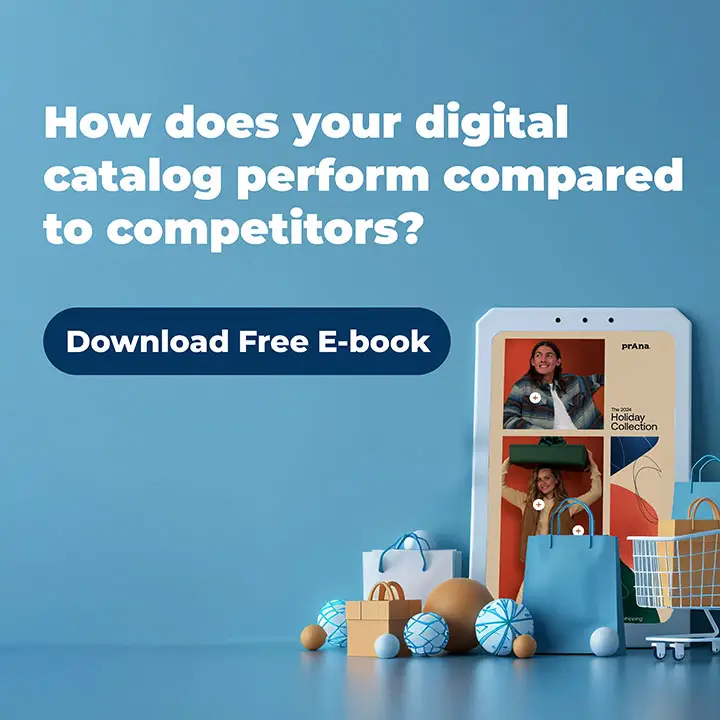Every Earth Day, we’re reminded to consider the digital transformation strategies that add to big environmental wins. But what about the big habits we rarely question? Like the tradition of weekly printed supermarket leaflets. That familiar 20-page A3 flyer, stuffed with colorful promotions and specials, lands in millions of mailboxes across countries like France or South Africa, week after week. But have you ever paused to wonder: What’s the environmental cost of all that paper?
We did the math. And it’s eye-opening.
The Environmental Cost of Printed Supermarket Flyers
Let’s consider a real-world scenario: a large grocery chain prints and distributes a 20-page A3 catalog to 1 million households every week.
How we calculated it:
- 1 catalog = 20 A3 pages → 10 A3 sheets
- 1 week = 1 million catalogs
- 1 year = 52 weeks
So in a year, that’s:
10 sheets × 1,000,000 copies × 52 weeks = 520,000,000 A3 sheets per year
Since each A3 sheet = 0.125 m², we get:
520,000,000 × 0.125 = 65 million m² of paper
That’s the size of about 9,100 soccer fields.
And in A4 terms (since most global paper stats refer to A4):
1 A3 sheet = 2 A4 sheets
→ 520 million A3 = 1.04 billion A4 sheets per year
So, what does that cost the planet?
Based on widely used environmental averages:
To put that in perspective:

- The water usage equals 208 Olympic swimming pools
- The CO₂ emissions are like driving a petrol car 40 million kilometers—or 1,000 times around the Earth
Embracing Digital Transformation
We get it—paper flyers work. They boost in-store sales, communicate promos, and help families plan grocery budgets. But digital transformation offers a smarter, greener alternative.
Supermarkets can maintain their marketing reach by moving from print to digital catalogs while slashing their environmental impact. Here’s how:
Benefits of embracing digital transformation
- Drastically Reduces Resource Consumption
No paper, no ink, no trucks—just pixels. - Better Personalization
Digital catalogs can be geo-targeted, personalized by shopper preferences, and updated in real-time. - Improved Analytics
Track clicks, opens, and engagement to see what promotions actually work—something print can’t do. - Cost-Effective in the Long Term
While print involves recurring production and distribution costs, digital catalogs scale with less overhead. - Always Accessible
Whether via email, app, or social media, digital promotions are wherever your customer is.
Case Study Potential: A Greener Grocery Future
Imagine if that same supermarket chain committed to going digital in just half of their regions:
- Trees saved annually: ~62,500
- Water conserved: 260 million liters
- Emissions cut: 4,716 tons of CO₂
That’s enough trees to reforest an area the size of Central Park every single year.
From Awareness to Action
Earth Day isn’t just about planting a tree or recycling a bottle—it’s about rethinking systems that no longer serve the planet. The move from paper flyers to digital catalogs isn’t a minor tweak. It’s a strategic digital transformation with significant ROI for both the business and the environment.
And consumers are ready. A growing number of shoppers are digital-first, preferring mobile notifications or emails over a wad of paper in the mailbox. Retailers that embrace this shift don’t just lower their carbon footprint—they boost loyalty by aligning with customer values.
Ready to Transform?
If you’re a retail decision-maker, Earth Day is the perfect time to explore how a digital-first approach can elevate your marketing while reducing your footprint.
- Audit your current paper usage
- Set clear reduction targets
- Partner with a platform that specializes in dynamic, engaging digital catalogs
- Tell your customers why you’re doing it, they’ll thank you
Because in a world that prints 1.04 billion sheets of paper a year for flyers, going digital isn’t just smart marketing, it’s essential stewardship.


